I spent a somewhat awkward month in eastern Venezuela in 2007, when George W. Bush and Hugo Chavez were at the height of their enmity. President Bush’s axis of evil speech (which, for the record, did not actually include Venezuela) had become legendary in Venezuela, and Chavez spent much of his time making four-hour speeches on prime-time television, convincing his people that the United States and Venezuela were on the brink of war.
Chavez’s saber-rattling—coupled with Mr. Bush’s unfortunate foreign policy decisions—made it vaguely uncomfortable to be an American in Venezuela. Military checkpoints were everywhere; whenever we rode a bus between cities, we would have to stop every hour or two, and get off the bus while the soldiers conducted a full search of everybody and everything on the bus. American tourists were extremely rare in eastern Venezuela, and Venezuelans were invariably shocked—and inquisitive—when they realized that we were from the United States. Nearly everybody thought that Bush was the devil, and Venezuelans would always ask us how we put up with life under the Bush dictatorship, or whether the United States was planning to invade Venezuela after we finished in Iraq.
Despite the nasty political climate, Venezuelans rarely held anything against us personally—some politically engaged Venezuelans even seemed to see us as ambassadors of peace, and welcomed us particularly warmly. Other Venezuelans didn’t give a rat’s ass about politics, and just wanted to talk about American major league baseball, which is arguably more popular in Venezuela than in the United States. I quickly realized that the best way to handle a military checkpoint was to flash my American passport, smile broadly, and start chatting about the New York Yankees or Detroit Tigers. Whenever a soldier would scowl in our general direction at a checkpoint, I would just say something about Magglio Ordonez (a Venezuelan native who won the 2007 American League batting title), and everything would be fine. (Thank you, Magglio: your chase for the batting crown probably saved me a ton of trouble, and possibly a small fortune in averted bribes.)
When it came to Venezuelan food, however, I think we missed out during our trip through the eastern portion of the country. The economy was thoroughly shattered in many of the places we visited, and precious few restaurants were able to survive. On occasion, we would stumble into a great arepa cart or an impressive little café, but we mostly lived off of bread, lunchmeat, and cans of corn and tuna that we purchased at grocery stores. Because we spent most of our time in smaller towns, little else was available, unfortunately.
So when I wandered into Patacon Pisao 2, a tidy little Venezuelan restaurant in Queens, I was embarrassed to admit that I knew very little about Venezuelan food, despite my travels in Venezuela. The friendly young Venezuelan behind the counter was hugely helpful: he explained that many of Patacon Pisao’s dishes—especially the patacones—were from the vicinity of Maracaibo, and that there was no shame in being familiar with only the arepas. So I ordered both an arepa and a patacon, just for variety’s sake.
Arepas are grilled (or lightly fried, depending on where you are in Venezuela) patties made from white corn; the arepas are then sliced in half like a pita, and stuffed with meat and other goodies. I ordered the pernil (roast pork) arepa, and received a dense bundle of Venezuelan brilliance, jammed with lettuce, tomato, pork, a flat patty of delicious fried cheese, and Patacon Pisao’s special sauce, which resembled a spiced tartar sauce. The arepa was of the fried variety, and surprisingly crunchy; it was messy as all hell, but absolutely delicious. For $5, the arepa was the size and weight of a good hamburger, and was easily a meal in itself.
I’ve always loved arepas, but the patacon was arguably even better. Imagine a messy sandwich, stuffed with spiced, shredded beef (carne mechada), more lettuce and tomatoes, another delicious little patty of fried white cheese, more hot sauce, and the aforementioned spiced tartar sauce. But instead of a bun, the sandwich was cased in two large, flat, greenish-brown discs, made from fried green plantains. Any sandwich made from deep-fried carbohydrates is bound to be delicious, but the patacon sandwich was a work of (messy, dense) art: the plantain discs were surprisingly chewy, and were far less greasy than I would have imagined. The arepa was a meal in itself, but the patacon might have been twice the size of the arepa. I was proud that I managed to eat both in one sitting. (Oink.)
Impressively, my entire bill came to $11, including a can of soda and tax. It isn’t all that easy to find any decent meal in NYC for $11; it’s mind-blowing to eat two really good meals in NYC for a grand total of $11. I love you, Patacon Pisao.
Patacon Pisao 2
85-22 Grand Ave., Elmhurst, Queens
Subway: Grand Ave.—Newtown


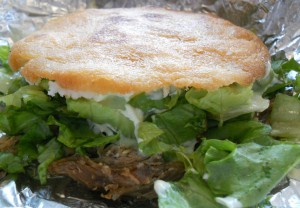
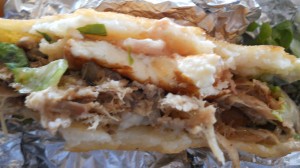

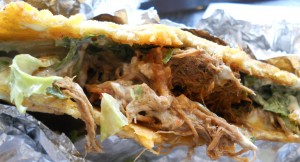







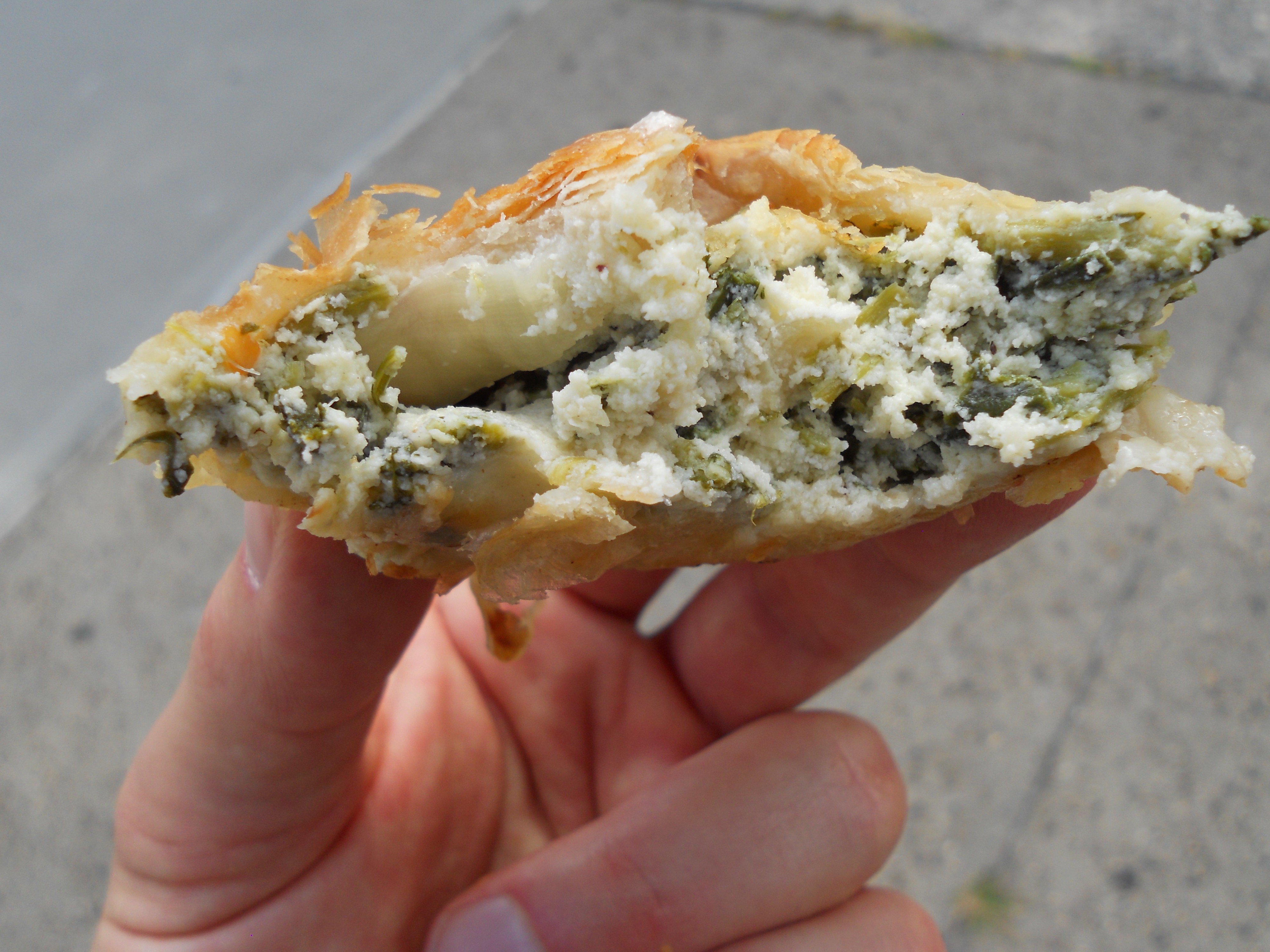
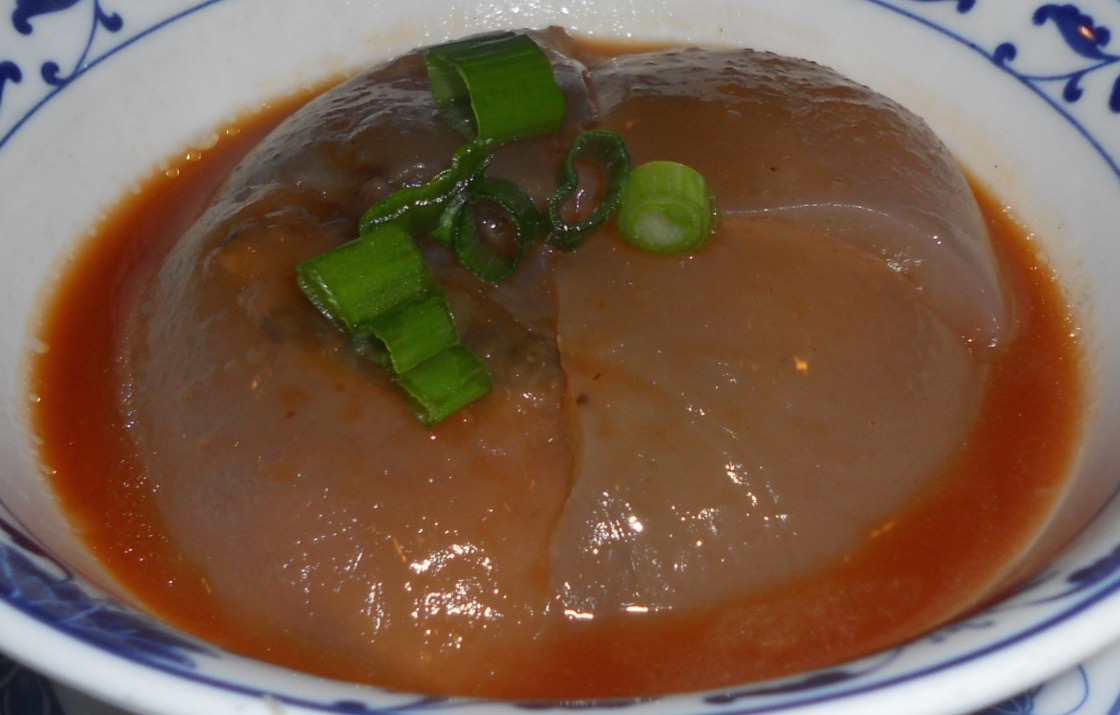
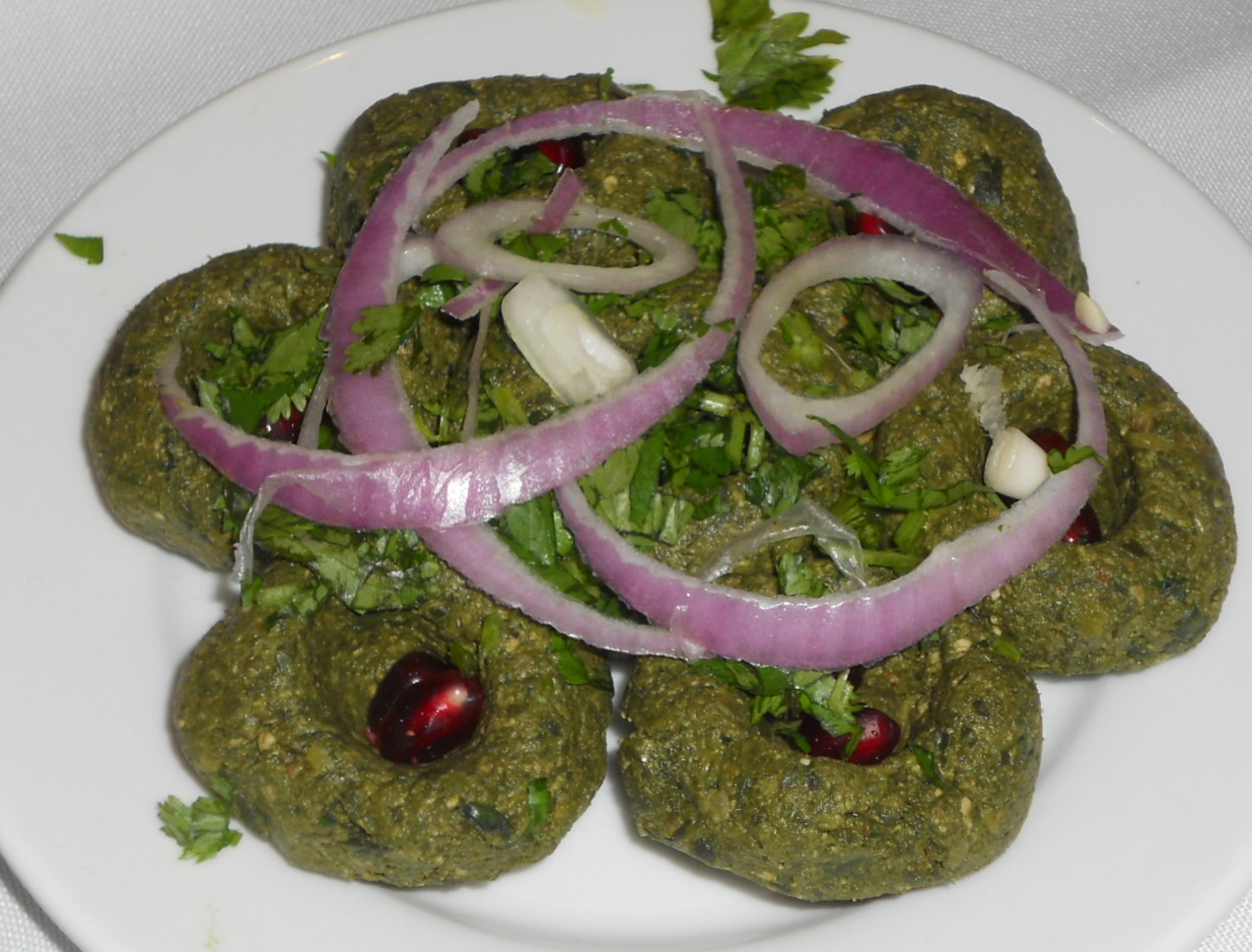
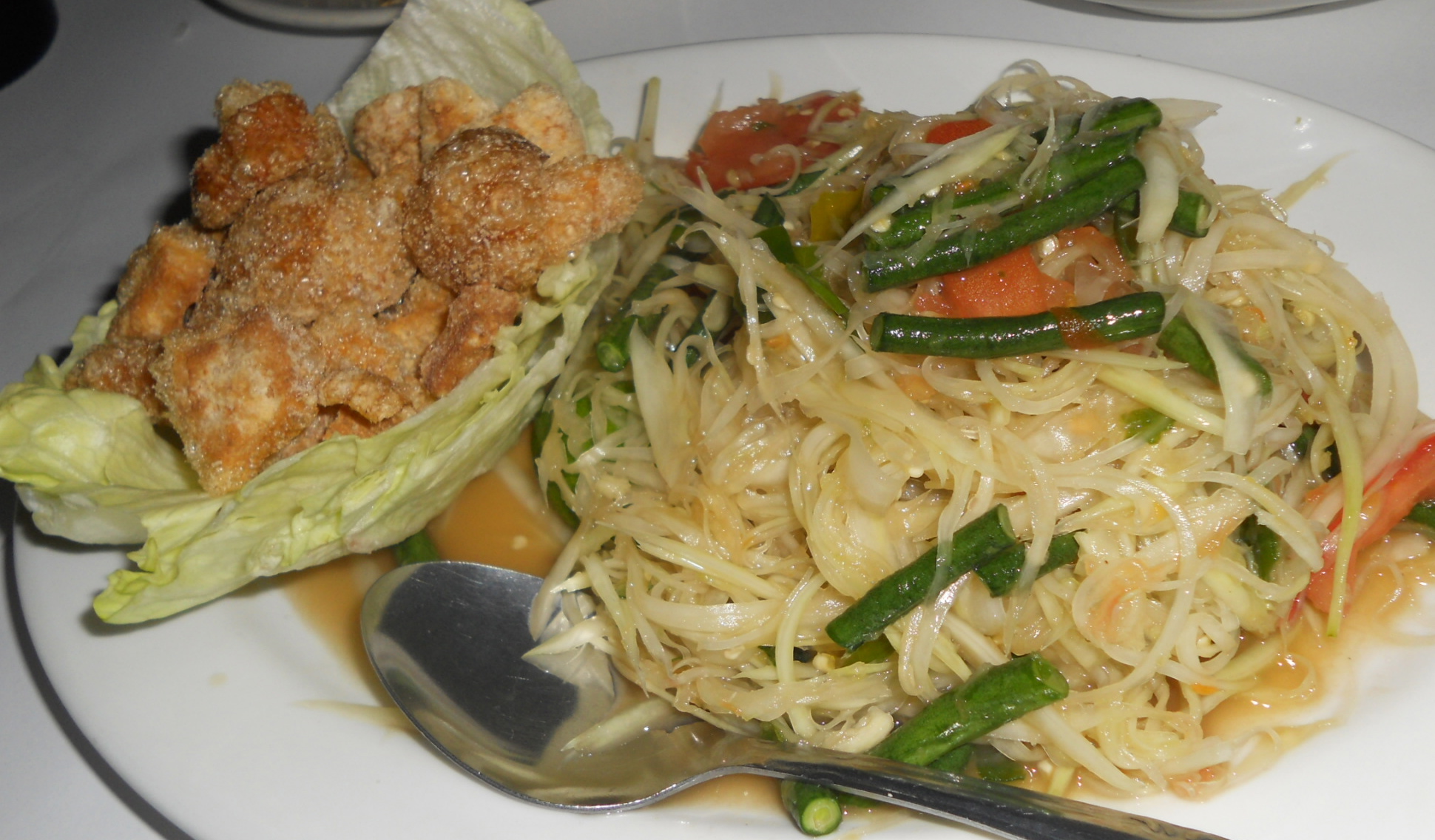
Thanks so much for the review, I hope to be able to come by and have a slight taste of Venezuela sometime soon.